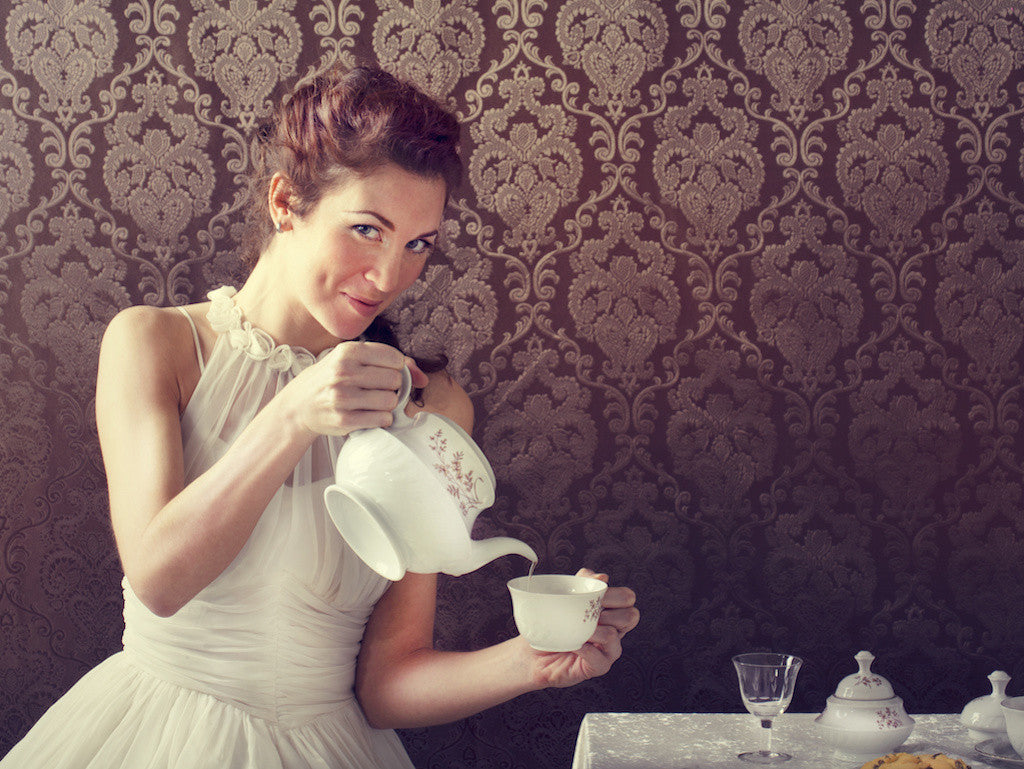
In North America we tend to associate tea parties with children, but a real tea party or simply “tea” is a rather adult affair. In Victorian times, the aristocracy had “afternoon tea” or “low tea” some time between three and five, served on low tables, and often in the parlour or sitting room. Inviting friends to tea is a lovely way to get together and it doesn’t have to be expensive. Here in Victoria we do have fancy and costly tea rooms, but afternoon tea is meant to be somewhat casual despite being steeped in tradition—pun intended. It’s really just a light meal of sandwiches, scones, sweets, and tea. If you've ever watched Downton Abbey and longed for a more refined way to entertain, do read on...
Plan your menu
As this is a low tea there are some traditional menu items that are usually served on a three-tier tea tray. Possibly the easiest way to plan your menu is to go by tier.
Top:
The top is all about the scones—savoury, sweet, and, plain. Of course, you’ll want to have good quality butter, clotted cream and jams at the ready.
Middle:
The centre is home to smart looking sandwiches and savoury tarts or other appetizers. Traditional watercress, cucumber and salmon sandwiches are standard, but you can get pretty creative here. Stilton filled dates, salmon mousse tarts and cheese puffs would also do a tea tray proud.
Bottom:
And now we get to the sweets. Line the bottom layer with cookies, cakes, lemon tarts, truffles, Turkish Delight, macarons—whatever your sweet tooth fancies. Just make sure everything is pretty, easy to eat and can ideally be scarfed back in a couple of bites.
Tea for two or three or four...
Well, since it’s right in the name of your gathering, you’d best make a good cuppa. Decide what kind of tea you’d like to serve—black, green, scented, herbal or a mix. Depending on how many guests you’re expecting, it’s wise to have a couple of good kettles and teapots on the go. For larger gatherings, consider renting a samovar or an urn. Practice brewing the perfect pot of tea with this helpful advice from The Tea Party Guide.
Send out invitations
Give your guests a couple of weeks notice and inform them of any theme. The Victorian theme can be limited to the menu and decor or you can invite guests to dress in period-appropriate clothing. If you’re an organized type, you may want to include the menu in the invitation. This gives guests an idea what to expect and allows anyone with dietary restrictions to plan accordingly. You can invite folks via email, but wouldn't it be lovely to send out something like this?
Set the table
Right. Here’s where you can go as over the top or as simple as you like. If you have fine china, this is the time to use it. If you’re looking for an excuse to invest in a nice setting, this may also be the time. However, you may want to go for a more jolly jumble of thrift store cups, saucers and tea trays. Or, set out your humble every day cups and saucers and relax. The idea is to present a beautiful, thoughtful table—not spend a fortune.
And that brings us to the table. Decide if you’re doing a sit down tea or a more casual buffet-style tea. Traditionally a low tea would be served on a coffee table or lower tables, but use what you have. If everyone’s to be seated, set the table with small plates, napkins, tea cups and whatever silverware needed. If you’re only serving finger foods, you won’t need a lot of flatware. If you’re going buffet-style, set the room up intimately so that guests can face one another and have a place to put their teacup and napkins or plates. You'll also need to have cream, milk and sugar on the table.
Use real linens if you have them, keeping in mind nothing has to match here. Mixing prints and colours can be very charming. Borrow from friends or use any pretty fabrics you may have in your home. If you don’t have cloth napkins, spring for the high quality paper ones and make sure you have plenty.
As we mentioned before, tiered tea trays are traditional and make it easier for your guests to help themselves while maximizing table space. But no one’s going to storm out if you set your dainties out on plates. Or you can try making your own tea trays, but really, pretty trumps tradition.
Botanical Victorian
Flowers make everything better. From wallpaper to carpets, Victorians loved flowers. Regardless on the time of year, you can bring whatever’s growing outdoors in. Place small vases of greenery here and there and create at least one large arrangement. Ivy looks beautiful twined around the table and there are more than a few outdoor spaces in town that would be happy to lose a bit of this highly invasive plant. Again, you don't have to spend money on flowers. The only rules of thumb when it comes to decor is to make it beautiful, make it memorable and make it welcoming for your guests.
It may seem a bit fussy, but with some prep work a Victorian tea isn't such a difficult way to bring a little old world magic into your life.
